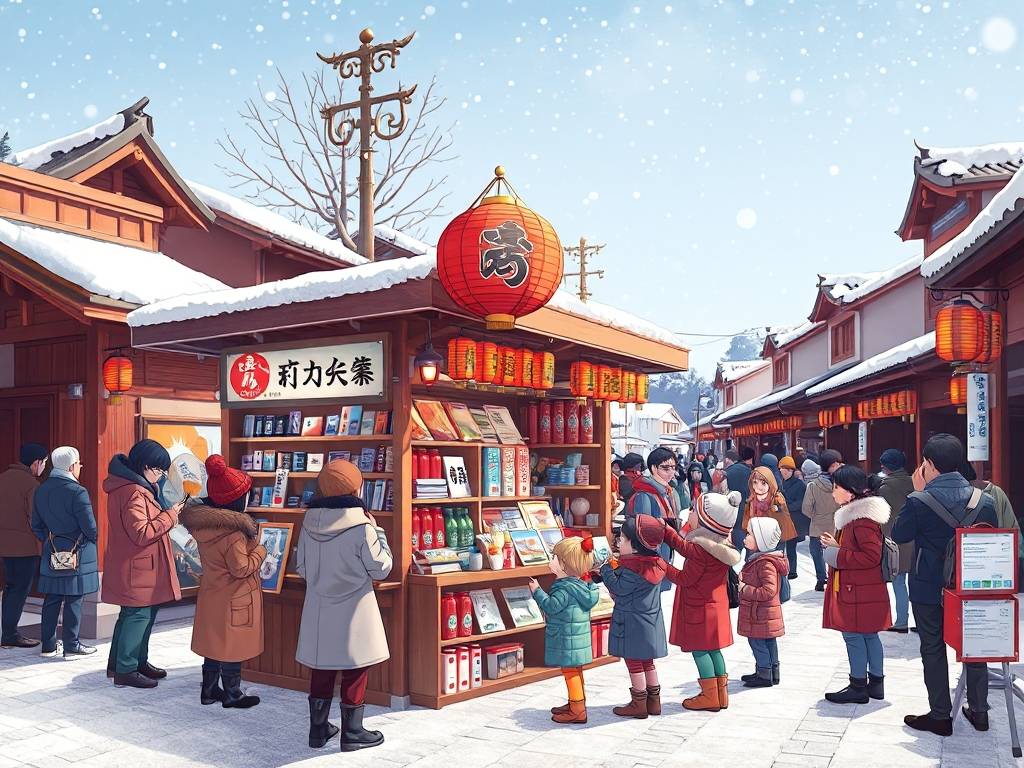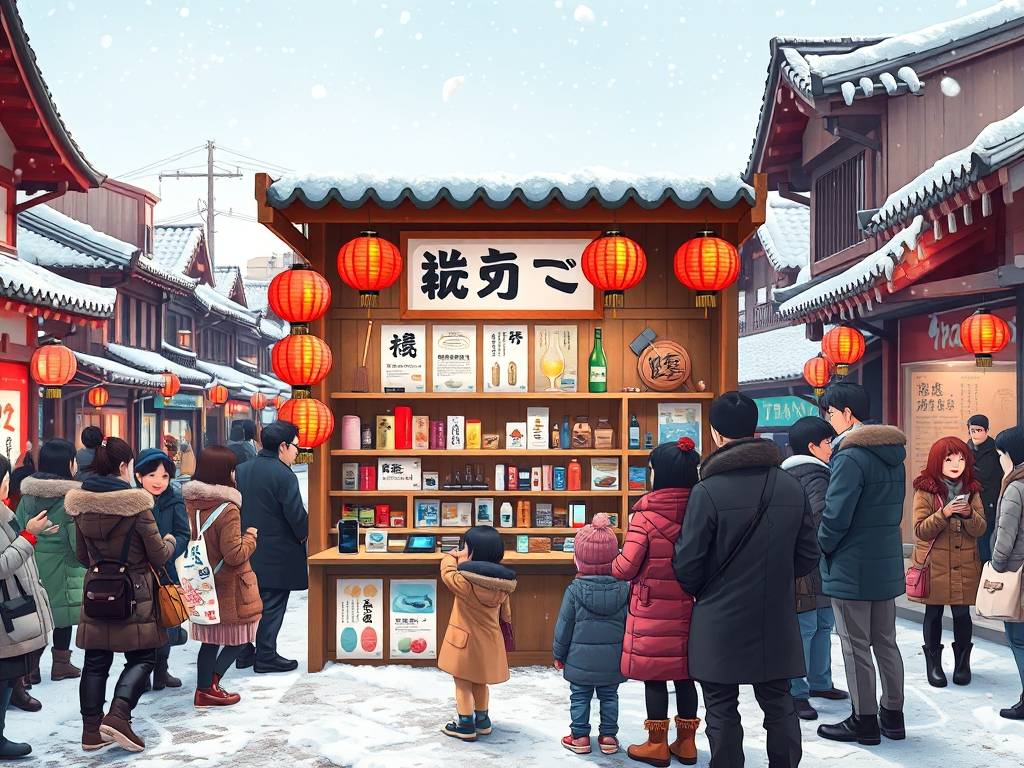Japan Travel
Japan’s Winter New Year’s Gear Reviews: Read About Celebration Tools
A Cozy Guide to Japan's Winter New Year's Gear: Elevating Your Celebration
As the final days of December whisper on the cold wind, Japan undergoes a profound and beautiful transformation. It's a time when the frantic pace of modern life yields to ancient traditions, and the home becomes the sacred center of the universe. This is the celebration of Oshogatsu, the Japanese New Year, a period steeped in ritual, reverence, and delicious food. But to fully immerse yourself in this unique winter experience, you need the right tools. This isn't about flashy gadgets; it's about timeless items that carry the weight of history and the warmth of family.
Navigating the world of traditional Japanese New Year decorations and essentials can be a delightful puzzle. What do you need? How do you use them? Why are they important? Let's pull up a kotatsu, pour a warm cup of tea, and explore the essential gear that makes a Japanese winter New Year celebration so magical, ensuring you have everything you need for an authentic and joyful start to the year.

The Grand Entrance: Welcoming the Gods with Kadomatsu
Your first step into the New Year spirit begins at the entrance. Before January 1st, you'll notice elegant, minimalist arrangements of bamboo, pine, and plum branches adorning the doorways of homes and businesses. This is the Kadomatsu, or "gate pine." More than just a decoration, it serves as a temporary shelter for the Toshigami-sama, the New Year's deity who brings blessings for the year ahead.
When you're looking for the perfect traditional Kadomatsu for your home, consider its components. The bamboo, cut diagonally to show a sharp edge, symbolizes strength and rapid growth. The pine represents longevity and endurance, while the plum blossoms hint at purity and new beginnings. You can find everything from large, elaborate pairs designed for a grand genkan (entryway) to smaller, modern apartment-friendly Kadomatsu designs that capture the essence in a more compact form. Setting up your Kadomatsu is a ritual in itself, typically done after December 13th and before the 28th (avoiding the 29th and 31st for cultural reasons). Placing one on either side of your entrance, you create a sacred gateway, inviting prosperity and good fortune to cross your threshold.
The Sacred Centerpiece: Shimekazari and the Divine Rope
Hanging above the doorway or on the front of the house, you'll find the Shimekazari. This sacred Shinto straw rope, decorated with items like a bitter orange (daidai, symbolizing generations of descendants), fern leaves (for prosperity), and a paper zigzag (shide), marks a purified and sacred space. It tells the Toshigami-sama, "This is a clean and worthy place for you to visit."
Choosing an authentic Shimekazari for New Year blessings is about understanding its symbolism. The rope itself demarcates the boundary between the pure and the impure. For those interested in DIY Shimekazari crafting tips, it's a wonderful, hands-on way to connect with the tradition. While making your own can be complex, starting with a simple straw rope and adding a few symbolic elements can be a deeply rewarding family activity. Whether store-bought or handmade, the Shimekazari is a powerful, non-negotiable piece of your essential Japanese New Year decoration set.
The Heart of the Home: The Kagami Mochi Offering
Now, let's step inside. The most important domestic altar is the Kagami Mochi, or "mirror rice cake." This striking arrangement consists of two stacked, round mochi (rice cakes), with a smaller bitter orange placed on top. Its name comes from the shape, reminiscent of bronze mirrors from ancient Japan, which were considered sacred objects.
The practice of where to buy the best Kagami Mochi has evolved. While many still make their own mochi, most people today purchase beautifully pre-packaged sets from supermarkets, department stores, or online retailers specializing in Japanese traditional goods. The assembly is simple but meaningful: place the larger mochi at the bottom, the smaller one on top, and crown it with the daidai. This structure symbolizes the passing of the old year into the new and the hope for a strong, layered accumulation of good fortune.
But the journey of the Kagami Mochi doesn't end on New Year's Day. A key tradition is Kagami Mochi breaking ceremony explained. On January 11th (a date known as Kagami Biraki), the hardened mochi is broken apart with a hammer or your hands—never cut with a knife, as that is considered bad luck. It is then used in traditional dishes like ozoni (New Year's soup) or shiruko (sweet red bean soup), ensuring that the blessings of Toshigami-sama are consumed and internalized by the family. This act completes the cycle of offering and receipt.

Feasting and Fellowship: The Joy of Osechi Ryori and Otoso
No Japanese New Year is complete without the feast, and this is where specific culinary gear shines. Osechi Ryori is the magnificent assortment of dishes packed in beautiful, multi-tiered lacquer boxes called Jubako. Each dish in an Osechi Ryori set is packed with symbolic meaning—sweet black beans for health, herring roe for fertility, shrimp for long life.
For the modern household, investing in a good set of Jubako boxes for storing Osechi is a game-changer. These boxes are not just pretty; they are practical, designed to preserve the food for the first three days of the New Year, a time when housework (especially cooking) is minimized so everyone can rest and enjoy time together. When considering how to choose traditional Jubako boxes, look for quality lacquerware that is durable and easy to clean. Even if you don't cook a full Osechi yourself, many department stores and restaurants offer pre-made sets, and having your own Jubako to transfer them into makes the experience feel truly special.
To wash down this symbolic feast, there is Otoso, a spiced medicinal sake. Drinking traditional Otoso sake for health is a ritual meant to ward off evil spirits and ensure a year free from illness. It is traditionally served in a special set of lacquerware vessels—three nested cups of increasing size, from small to large, and a spouted pot. The ritual involves pouring the sake from the pot into the cups, which are passed and shared among family members. Using a proper Otoso serving set lacquerware elevates this simple act into a meaningful family toast, connecting you to generations of celebrants who have done the same.
The Personal Touch: Otoshidama and Writing Tools
Finally, let's not forget the joy of the children! Otoshidama is the custom of giving children beautifully decorated envelopes containing money. These are not just any envelopes; they are small works of art, often adorned with popular cartoon characters or traditional motifs like the zodiac animal of the year. Selecting cute Otoshidama envelopes for kids is a fun pre-New Year activity, and it teaches children about the joy of receiving and, eventually, the responsibility of giving.
For adults, a quieter tradition is Kakizome, the "first writing" of the year. On January 2nd, people gather to brush-paint a hopeful word or phrase, often related to their goals or aspirations for the coming months. This requires a beginner's Kakizome calligraphy set, which includes ink, an inkstone, paper, and brushes. You don't need to be a master calligrapher; the act itself is a meditation, a moment of focus and intention-setting that beautifully contrasts with the festive feasting.
From the public declaration of the Kadomatsu to the intimate family sharing of Otoso, and from the sacred offering of Kagami Mochi to the joyful feasting from Jubako boxes, every piece of gear in a Japanese New Year celebration has a purpose. They are not mere objects; they are vessels of meaning, tools for ritual, and catalysts for togetherness. By understanding and acquiring these essential items, you're not just decorating your home or planning a menu—you are preparing to welcome a new year with the depth, grace, and warmth of a timeless Japanese tradition.
相关文章
- Kyoto’s Traditional Shopping Gear Reviews: Read About Shopper Tools
- Japan’s Budget Accommodation Gear Reviews: Read About Travel Equipment
- Tokyo’s Transportation Gear Reviews: Read About Commuter Tools
- Japan’s Mountain Star Gazing Gear Reviews: Read About Telescope Tools
- Japan’s Traditional Tea Ceremony Gear Reviews: Read About Tea Tools
- Japan’s Summer Surf Gear Reviews: Read About Beach Equipment
- Kyoto’s Fall Foliage Gear Reviews: Read About Hiking Equipment
- Japan’s Budget Dining Gear Reviews: Read About Food Tools
- Tokyo’s Science Museum Gear Reviews: Read About Exhibit Tools
- Japan’s Island Family Beach Gear Reviews: Read About Kid Equipment
发表评论
评论列表
- 这篇文章还没有收到评论,赶紧来抢沙发吧~


